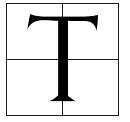Tribal Marks: The Struggle between Tradition and Abuse
And the various reasons why it should be abolished
 Tribal marks are bodily marks that people bear, particularly Africans. Their history can be traced back to the 14th century in West Africa. Many people attribute this tradition’s origins to the slave trade era when slave raiding was a regular occurrence. During that time, tribal marks were used by families to identify one another and reconnect with themselves during captivity. It helped people retain their roots after they were captured and taken into slavery.
Tribal marks are bodily marks that people bear, particularly Africans. Their history can be traced back to the 14th century in West Africa. Many people attribute this tradition’s origins to the slave trade era when slave raiding was a regular occurrence. During that time, tribal marks were used by families to identify one another and reconnect with themselves during captivity. It helped people retain their roots after they were captured and taken into slavery.
These marks are usually engraved by piercing the skin with sharp objects like blades and knives.
In countries like Nigeria, Ghana, Sudan, Ethiopia, and Tanzania, tribal marks are common and some people have these marks on the faces, chests, and other parts of their bodies.
Reasons for tribal marks
People have tribal marks for various reasons.
In the past, they served various purposes such as identification and beautification. They were used by ethnic groups to identify members of their tribe or family lineage. They usually gave a sense of belonging to those who bore them. At birth, the marks were put on a newborn as a symbol that he belonged to a particular group.
